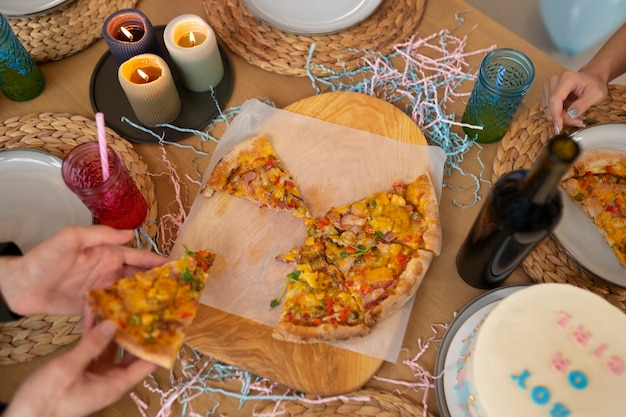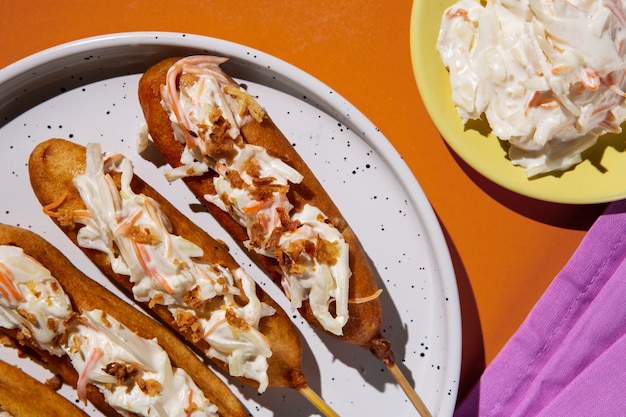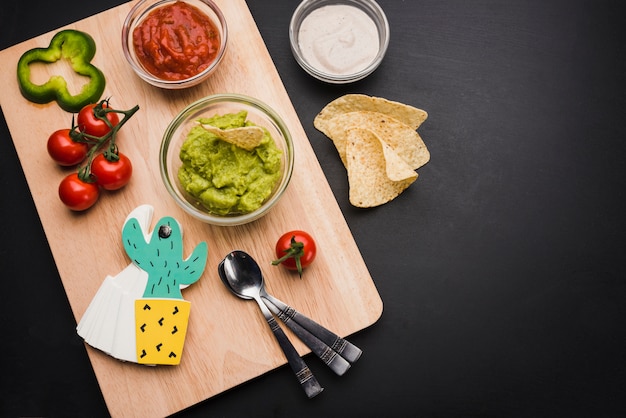Enchiladas, oh enchiladas! They're a culinary comfort food, a fiesta of flavours, and a staple in my kitchen. But like any good recipe, mastering the art of baking enchiladas requires a little finesse, especially when it comes to oven temperature. You see, I've been there, done that - the undercooked, overcooked, dry, soggy… the whole enchilada disaster. So, I set out on a quest to understand the science behind enchilada baking, and today, I'm sharing my secrets with you. Get ready to unlock the secrets of the perfect enchilada bake!
(Part 1) The Importance of Oven Temperature: It's Not Just a Number

You might think, "Oven temperature? It's just a number, right?" Wrong! Oven temperature is the key to unlocking the potential of your enchiladas. Just like you wouldn't bake a cake at the same temperature as a sourdough loaf, understanding the right heat for enchiladas is vital. Too low, and you'll end up with a sad, undercooked mess. Too high, and you'll be left with a crispy, dry disaster. Finding that sweet spot is the difference between a "meh" meal and an enchilada symphony!
The Science Behind the Sizzle: How Heat Affects Your Enchiladas
Let's delve a little deeper into the science. Oven temperature directly influences how the heat penetrates your enchiladas. A higher temperature means a quicker cook time, perfect for a crispy exterior, but it also increases the risk of overcooking delicate fillings like cheese or seafood. On the other hand, a lower temperature cooks more gently, allowing for even heating and a soft, melt-in-your-mouth texture. It's all about finding that delicate balance between crispiness and tenderness, a culinary dance that we're about to master together.
(Part 2) The Golden Rule of Enchilada Baking: 350°F (175°C)

Now, let's get down to business. The general rule of thumb for baking enchiladas is 350°F (175°C). This temperature is your go-to for even cooking, a crispy exterior, and a soft, melty interior. It's the perfect middle ground, a happy place for your enchiladas. However, just like with any good rule, there are exceptions. The world of enchiladas is full of variables, and adjusting the temperature based on specific ingredients, your pan, and even your oven's personality is key to achieving enchilada perfection.
Factors That Can Influence Your Oven Temperature: A Symphony of Variables
Before you turn up the heat, take a moment to consider these factors. They can make the difference between an average bake and an enchilada masterpiece:
- The Filling: Delicate fillings like seafood or mushrooms call for a slightly lower temperature to prevent overcooking. Think of it as a gentler touch for delicate flavours. On the other hand, hearty fillings like beef or chicken can handle a little more heat, resulting in a crispier exterior.
- The Sauce: A thick, creamy sauce might benefit from a slightly higher temperature to prevent it from becoming watery. A thin, watery sauce, however, might need a lower temperature to avoid over-reduction. It's all about creating the right consistency for your desired sauce texture.
- The Pan: Different pans heat up at different rates. Darker pans absorb heat faster than light ones, so you might need to adjust the oven temperature accordingly. It's like choosing the right pot for a specific soup - the pan matters!
- Your Oven: Every oven has a personality. Some run hotter than others. This is why it's always good to calibrate your oven to ensure accurate temperatures. You might need to adjust the temperature slightly based on your oven's quirks.
(Part 3) The Enchilada Bake-Off: Experimenting with Temperature and Time

Alright, let's get our hands dirty. I'm going to share some specific examples of how oven temperature can influence your enchilada results. Remember, these are just starting points. Adjust the temperature and baking time based on your ingredients and personal preferences. It's about finding your own enchilada symphony!
Example 1: Classic Chicken Enchiladas - A Timeless Favourite
For these, I usually bake them at 350°F (175°C) for about 30 minutes. The chicken filling cooks evenly, and the cheese melts beautifully, creating that glorious gooey goodness. The enchiladas emerge with a satisfyingly crispy exterior and a soft, melty interior. Classic for a reason!
Example 2: Beef Enchiladas with Spicy Red Sauce - A Bold and Fiery Delight
Now, this one calls for a bit more heat. I bake them at 375°F (190°C) for about 25 minutes. The higher temperature helps to develop a beautiful, crispy crust, while the spicy red sauce intensifies its flavour, creating a perfect combination of heat and flavour. A true enchilada adventure!
Example 3: Spinach and Feta Enchiladas with White Sauce - A Light and Delicate Choice
This delicate filling requires a gentle touch. I bake these at 325°F (160°C) for about 25 minutes. The lower temperature prevents the feta from becoming rubbery, and the spinach stays vibrant and flavorful. A lighter, yet equally delicious option!
(Part 4) The Art of Checking for Doneness: Ensuring Your Enchiladas are Ready for the Feast
Now comes the crucial part: how do you know when your enchiladas are truly done? You can't solely rely on the timer. It's about using your senses and a bit of common sense.
The Golden Rules of Doneness: A Guide to Enchilada Perfection
Here's a breakdown of how to check for doneness:
- Look at the cheese: If the cheese is bubbling and golden brown, it's a good indicator that the enchiladas are close to being done. The cheese is your visual cue for doneness.
- Touch the enchiladas: If they feel firm to the touch, it means they're cooked through. This tactile test helps you gauge the internal doneness.
- Use a food thermometer: For ultimate peace of mind, use a food thermometer to check the internal temperature of the enchiladas. They should be at least 165°F (74°C). This is your scientific backup for ensuring food safety.
(Part 5) The Importance of Resting: Patience is a Virtue in Enchilada Baking
Alright, let's talk about resting time, a crucial step that many people overlook. After you remove those beautiful enchiladas from the oven, don't be tempted to dive in right away! Give them a good 10-15 minutes to cool slightly. Why? Because resting allows the filling to set, the cheese to solidify, and the flavours to meld together, creating a more harmonious and delicious bite. It's all about achieving that perfect enchilada symphony!
(Part 6) Tips and Tricks for the Perfect Bake: Elevating Your Enchilada Game
Now, let's delve into some of my favourite enchilada baking hacks, the secret weapons that will take your enchiladas from good to great.
Hack 1: The Foil Trick - Protecting Your Delicate Fillings
This is a lifesaver for preventing overcooked enchiladas, especially when dealing with delicate fillings. Simply cover your baking dish with foil for the first half of the baking time. This traps the heat and prevents the enchiladas from drying out. Then, remove the foil for the last 10-15 minutes to allow the cheese to brown and crisp up. It's the best of both worlds, protecting those delicate flavours while achieving a beautiful golden crust.
Hack 2: The Baking Dish Choice - Finding the Right Size for Your Enchiladas
Choose a baking dish that's not too big or too small for your enchiladas. If you use a dish that's too small, the enchiladas will crowd each other and cook unevenly. If you use a dish that's too big, the enchiladas will spread out too much, resulting in a thinner layer that might not cook as evenly. Find that sweet spot, and your enchiladas will be happy campers!
Hack 3: The Spritz Trick - Keeping Your Enchiladas Moist and Flavorful
You know how those enchiladas can sometimes get a bit dry on top? Well, here's a simple trick to combat that. Before you pop them in the oven, give the enchiladas a little spritz of water. This creates a nice, moist environment, ensuring that your enchiladas stay juicy and flavorful, a delightful surprise with every bite.
(Part 7) Enchilada Oven Temperature Chart - A Handy Guide for Your Baking Adventures
I know, I know. All this information can be overwhelming. That's why I've created a handy-dandy enchilada oven temperature chart. This will give you a starting point for different types of enchiladas. Just remember to adjust the temperature based on your ingredients, pan, and oven's personality. It's your enchilada journey, your rules!
| Type of Enchilada | Oven Temperature | Bake Time |
|---|---|---|
| Classic Chicken Enchiladas | 350°F (175°C) | 30 minutes |
| Beef Enchiladas with Spicy Red Sauce | 375°F (190°C) | 25 minutes |
| Spinach and Feta Enchiladas with White Sauce | 325°F (160°C) | 25 minutes |
| Shrimp Enchiladas with Tomatillo Sauce | 350°F (175°C) | 20 minutes |
| Vegetarian Enchiladas with Black Bean Sauce | 350°F (175°C) | 30 minutes |
(Part 8) FAQs - Addressing Your Burning Questions about Enchilada Baking
Time for the burning questions! Let's address some common enchilada baking inquiries. It's time to shed light on those mysteries and set your mind at ease!
- Q: What if my enchiladas are getting too brown too quickly?
A: This usually means your oven is running a bit hot. Try lowering the temperature by 25 degrees and checking again. You can also use the foil trick to help prevent over-browning. It's all about finding that perfect balance of browning and crispness.
- Q: Can I bake my enchiladas in a slow cooker?
A: You absolutely can! slow cooking enchiladas is a great way to achieve a tender, flavorful result. Just remember that the cooking time will be much longer than in the oven. It's a slow and steady approach to enchilada perfection.
- Q: What if my enchiladas are still a bit undercooked in the middle?
A: Don't worry! Just pop them back in the oven for another 5-10 minutes. You can also use a food thermometer to make sure they reach the safe internal temperature of 165°F (74°C). It's about ensuring those enchiladas are cooked through and ready to enjoy!
- Q: How long can I store leftover enchiladas?
A: Enchiladas can be stored in the fridge for up to 3-4 days. Just reheat them in the oven or microwave until they're heated through. Enjoy those enchilada leftovers guilt-free!
- Q: Can I freeze enchiladas?
A: Absolutely! You can freeze unbaked or baked enchiladas. Just wrap them tightly in plastic wrap or aluminum foil, and then store them in a freezer-safe bag or container. To reheat frozen enchiladas, thaw them in the fridge overnight and then bake them at 350°F (175°C) for about 30 minutes. It's all about embracing those enchilada leftovers!
(Part 9) Final Thoughts: Embrace the Enchilada Journey
So there you have it! My ultimate guide to nailing the perfect enchilada bake. Remember, it's all about finding the right balance, experimenting, and having fun in the kitchen. Don't be afraid to adjust the temperature based on your specific needs. And most importantly, enjoy the process and savor the delicious results! Happy baking, and may your enchiladas always be a symphony of flavors!
Everyone is watching

Prime Rib Roast Cooking Time Chart: Per Pound Guide
Cooking TipsPrime rib roast. Just the name conjures images of lavish dinners, crackling fires, and hearty laughter. It’s ...

How Long to Bake Potatoes in the Oven (Perfect Every Time)
Cooking TipsBaked potatoes are a staple in my kitchen. They're incredibly versatile, delicious, and surprisingly easy to m...

Perfect Rice Every Time: The Ultimate Guide to Cooking Rice
Cooking TipsAs a self-proclaimed foodie, I've always been a bit obsessed with rice. It's the foundation of countless cuisi...

The Ultimate Guide to Cooking Asparagus: Tips, Techniques, and Recipes
Cooking TipsAsparagus. The mere mention of this spring delicacy conjures up images of vibrant green spears, crisp and burs...

Ultimate Guide to Cooking the Perfect Thanksgiving Turkey
Cooking TipsThanksgiving. Just the word conjures up images of overflowing tables laden with delicious food, the scent of r...
